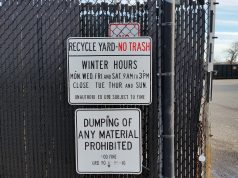Substance abuse stands as one of the most pressing issues numerous US states have to deal with, and New Jersey is no exception. From the scenic coast of the Jersey Shore to the vibrant city streets of Jersey City, besides gambling issues, this US state battles a complex set of challenges concerning substance addiction and its not-so-benign consequences. We dive into the heart of this matter; we’ll shed some light on the prevalence, (underlying) causes, and efforts to combat substance use trends in New Jersey. Additionally, we’ll highlight the pathways to effective treatment, regardless of your location within the state.
What types of illicit drugs are being used in New Jersey?
Suppose you were to look at the substance use trends and the 2019 overview of substance use in NJ. In that case, you’d reveal a somewhat troubling landscape where heroin, other opiates, cocaine, and marijuana are among the most popular substances people consume. Note that this information predates the legalization of marijuana for recreational use.
Jersey’s susceptibility to illicit drug use is not without a good reason. Geographical positioning renders the state vulnerable to the widespread distribution of illicit drugs—organized crime syndicates commonly take care of this. In other words, illegal substances are readily available in the Garden State. Cocaine and heroin abuse are focal points here as they greatly affect the state’s crime narrative. Illegal drug activity remains a major driver of violent criminal behavior, and heroin-related cases dominate federal sentencing. Therefore, the severity of the issue is not to be taken lightly.
New Jersey substance use trends: numbers and facts
According to the Substance Abuse Overview for 2021, in that year, New Jersey reported 87,745 treatment admissions and 86,626 discharges related to substance abuse. Among the primary drugs leading to treatment admissions, heroin, and alcohol stood out as the most popular (38% and 36% of admissions, respectively), while cocaine, marijuana, and methamphetamines accounted for smaller percentages.
The demographics
One of the most straightforward methods and ways to understand the profile of substance users is by examining admissions in NJ’s treatment facilities. That’s primarily because many cases of substance use disorder remain unregistered by law, thus leaving police statistics incomplete.
Here’s some information on the profiles of those seeking treatment:
- Most admissions were male (69%) and white (60%), with Medicaid being the primary insurance provider (70%).
- The treatment center data has shown some correlations between substance abuse and employment status, living arrangements, and age groups.
- A solid portion of admitted individuals were unemployed (20%) or homeless (10%).
This underscores the complex social and economic dimensions intertwined with substance abuse issues. Lastly, the treatment data indicated a pretty high rate of relapse, with over a third of clients having been admitted two or more times.
The geography
The geographical distribution of admissions revealed concentration in certain counties: Essex, Camden, and Atlantic were among the top five counties for treatment admissions. Now, you might wonder: beyond mere curiosity, what compelling reasons exist for us to seek these insights? They can inform lawmakers, healthcare providers, and community organizations to tailor interventions to tackle specific local needs and improve access to substance abuse treatment services across the Garden State.
Which city in the Garden State has the biggest issue with substance use?
In the last two decades, Jersey City emerged as a synonym for rampant drug use in New Jersey. It’s no wonder things are the way they are: the city is situated within the New York and New Jersey High-Intensity Drug Trafficking Areas (HIDTAs). The presence of major transportation routes and urban density further complicates efforts to address the issue effectively (as is the case with NJ in general). Also, socioeconomic factors and an unfortunate history of marginalization add up to the vulnerability of Jersey City’s population to various forms of substance abuse.
Substance abuse treatment in New Jersey
The Division of Mental Health and Addiction Services (DMHAS) in New Jersey is responsible for overseeing substance abuse treatment, prevention, and recovery support services. Designated by the US Substance Abuse and Mental Health Services Administration (SAMHSA), DMHAS establishes policies and collaborates with independent treatment providers to offer NJ residents a full spectrum of care (detoxification, outpatient, and residential treatment). Loyal to the American Society of Addiction Medicine criteria, DMHAS ensures appropriate placement for individuals seeking help with their substance abuse. Additionally, they finance prevention, seminars on early intervention, and recovery support services.
Dual diagnosis treatment
Before we take a closer look at how this treatment functions and its specific nuances, let’s answer the fundamental question: what is dual diagnosis? Dual diagnosis involves both a substance use disorder and a mental health condition. They co-occur more often than you’d think: around half of those with mental illness will also experience substance use disorders. This curious interplay between the two conditions only makes them worse individually.
In the Garden State, some treatment centers incorporate dual diagnosis treatment into their programs, aiming to comprehensively address various issues simultaneously. This approach enhances the recovery prospects for their patients by tackling multiple concerns simultaneously. As one of the prime facilities offering this form of treatment, We Level Up Lawrenceville NJ has over 15 years of unified experience and provides world-class, evidence-based substance abuse treatment. At their facilities, qualified professionals manage both mental health conditions and substance use disorders at the same time with a low patient-to-therapist ratio. Available options include medications, therapy, and support groups for social and emotional assistance. This form of therapy is often regarded as the pinnacle of effective substance abuse disorder treatment.
How long does substance use treatment last?
The length of substance use treatment depends on individual needs and the level of care required. It usually starts with safe detoxification, lasting from a few days to a few weeks. Once the detox phase ends, people may move to longer inpatient programs, lasting from 30 to 90 days or more (depending, once again, on the patient’s needs).
Conclusion
The significant number of treatment admissions and discharges underscores the ongoing issue of substance use trends within the Garden State. As you can see, there’s a correlation between substance abuse and various socio-demographic factors: it highlights the need for tailored, individualized interventions. Also, the integration of mental health treatment with substance abuse care, as seen in dual diagnosis programs offered by some of the state’s treatment facilities, shows promise in addressing the divergent needs of people battling substance use in New Jersey.
References:
https://www.nj.gov/humanservices/dmhas/resources/services/treatment/addictions.html






